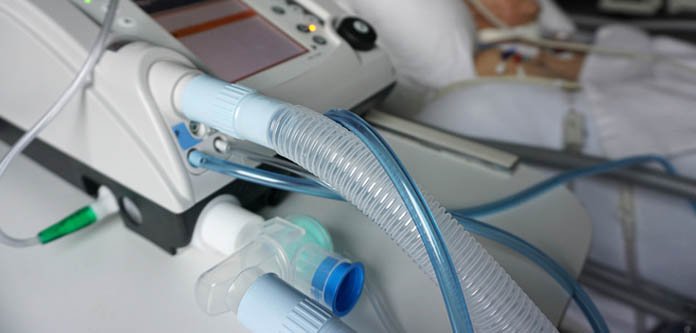As the world battles the outbreak of COVID-19 pandemic, health facilities are in shortage of ventilators, the essential devices that assist the breathing of critically ill Corona Virus patients.
Governments have called for more ventilators to meet the demands of the exponentially growing cases of COVID-19 but the companies that currently make ventilators will not be able to ramp up production quickly enough.
But what are these ventilators and how are they synonymous with pump industry?
Mechanical ventilators are used to assist or replace spontaneous breathing by moving breathable air in and out of the lungs to deliver oxygen to a patient. A ventilator machine takes over a person’s breathing when his or her lungs have failed due to a disease. The movement of air into and out of the lungs is called breathing or ventilation.
Ventilator components
Gas-mixture and gas-metering assembly
The ventilator control system for delivery respiratory gas to a patient involves an apparatus which includes a pressure sensor for measuring the pressure within a gas containment vessel, the control of the flow of respiratory gas into the containment vessel responsive to pressure within the containment vessel, and the control of the outflow of respiratory gas responsive to changes in pressure in the containment vessel.
Both the inflow of gas to a receiver tank and outflow of respiratory gas are responsive to modes of breathing being provided to a patient.
Non-return valve
The non-return valves provide air flow in one direction only, without reducing significantly the efficiency of the fan. These non-return valves are perfect for use together with extractor fans. Wind shutters will avoid air to be flowing incorrect direction through the extractor fan.
Safety valve
Safety valve is a valve that act as a protection of equipment from exploding or damaging and is mainly installed in pressure vessels. Safety Valve automatically actuates when the pressure of inlet side of the valve increases to a predetermined pressure, to open the valve disc and discharge the fluid (steam or gas); and when the pressure decreases to the prescribed value, to close the valve disc again.
Safety valve is a final safety device which controls the pressure and discharges certain amount of fluid/gas without any electric power support.
READ: Corona virus could find way in waste water – Research
Emergency expiratory valve
The main tasks of the expiratory valve sets are to control the respiratory phases and the expiratory pressure, as well as to regulate the PEEP. Their design also prevents internal ventilator components from coming into contact with the patient’s exhaled gas.
Spring-loaded valve
A spring loaded pressure safety valve is a conventional pressure relief valve which is designed to open at a predetermined pressure and protect a vessel or system from excess pressure by removing or relieving fluid from that vessel or system.
Flow-Control Valves
A system including the method employed, for controlling the flow of a pressurized gas through a variable orifice flow control valve in a pressurized gas conduit system, such as a ventilator, in response to either a desired flow rate/volume input signal, a desired pressure signal or both.
With respect to the flow rate input signal, the system generates a flow signal indicative of the actual flow rate of gas through the flow control valve by measuring the pressure drop across the valve and using the actual orifice area based on a control valve position signal given to the valve. This flow signal is compared to the flow rate input signal to give a correction signal which is used to form a volume flow reference signal.
Expiratory flow sensor
A flow meter works by measuring the amount of a liquid, gas, or steam flowing through or around the flow meter sensors. Flow meter sensors work in different ways, but with the same end goal: Provide the most accurate and repeatable flow measurements for a specific application, whether for process control, general research activities, or semiconductor processing.
Barometric pressure sensor
A pressure sensor is a device equipped with a pressure-sensitive element that measures the pressure of a gas or a liquid against a diaphragm made of stainless steel, silicon, etc., and converts the measured value into an electrical signal as an output. Barometric pressure sensors are designed to measure changes in atmospheric pressure.




